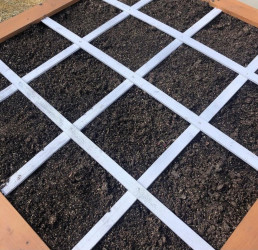Starting a Box Garden
If you don’t have an old-fashioned garden where your plants can thrive, you can still flex those green fingers by starting a box garden. Right off the bat, box gardens offer the following benefits:
- Conveniently located – It’s up to you where your box garden goes, whether that’s over concrete or any soil type.
- Beautiful to look at – A box garden is a great landscaping feature that can make your environment more appealing.
- Provides fertile soils and good drainage for your plants – You can add fresh, high-quality, fertile soil in a contained bed, so your plants won’t have to grow up in a subpar environment. It’s also possible to use gravity to your advantage, so your garden box has optimum drainage to reduce root rot.
- Weeds are not much of a problem – If your garden box is lined, your plants won’t have to compete with the as many weeds that pop up on the ground. Because of the loose soil, it’s also easier to uproot any weeds that show up.
So, what are you waiting for? Get the lowdown on how to build your box garden now and start enjoying these benefits.
Steps to starting a box garden
Starting a box garden involves two major steps:
Installing the garden box
You can build your garden box from the ground up or by purchasing a pre-fabricated garden bed. It all depends on whether you’ve got time to burn or the expertise and tools to set things up properly. Another thing to consider is to what extent you need to customize your garden box to suit your outside area.
In any case, you can find all the materials you need from stores that sell landscaping supplies. Garden boxes are typically made from wood, recycled timber, corrugated iron, stone, or brick, whether you’re constructing on-site or buying a kit.
Filling the garden box
When setting up the soil for your garden box, you can mix different soils, such as compost, hay, manure, fertile native soil from your yard, or soil and mulch, or one of our specifically designed growing medias. Make sure the soil mix is not too dry or moist. It should easily combine when molded and quickly loosen when poked.
Once your garden box is lined and filled up, the next step is watering and then it’s planting time.
Consider planting annuals, perennials, or even a square foot vegetable garden.
Other things to know when starting a garden box
- If you’re renting, consider building a portable garden box. For instance, you can use a trolley or wheelbarrow to contain your plants. This gives you the added benefit of being able to move your garden box to wherever there’s a sunny spot.
- Make sure to water the soil when at least the top 5 inches of soil is no longer moist. The best time for watering is in the morning. This gives the water plenty of time to drain or evaporate, which reduces root rot.
The bottom line
Now that you’ve got the 101 on starting a garden box, up next is actually growing your favorite plants. Be sure to invest in the right landscaping supplies, so your plants thrive in the best available environment.
For instance, using the right type of mulch can be the difference between poor quality soil and healthy, aerated, and fertile soil
